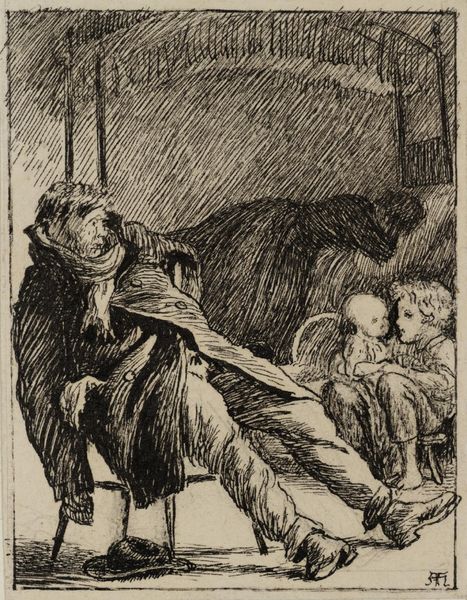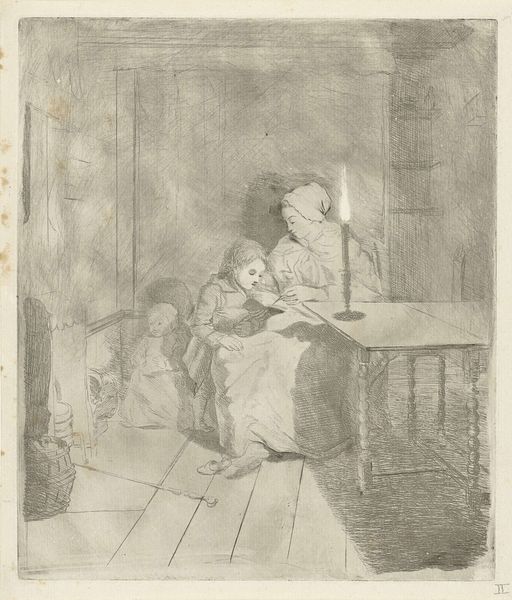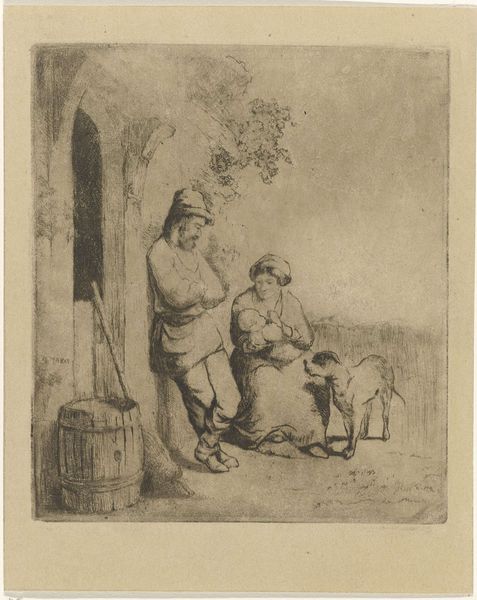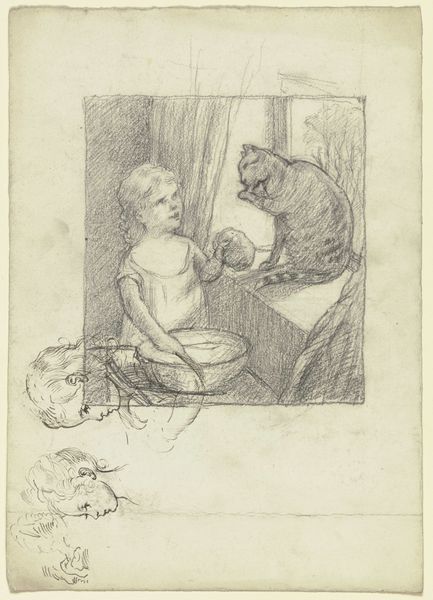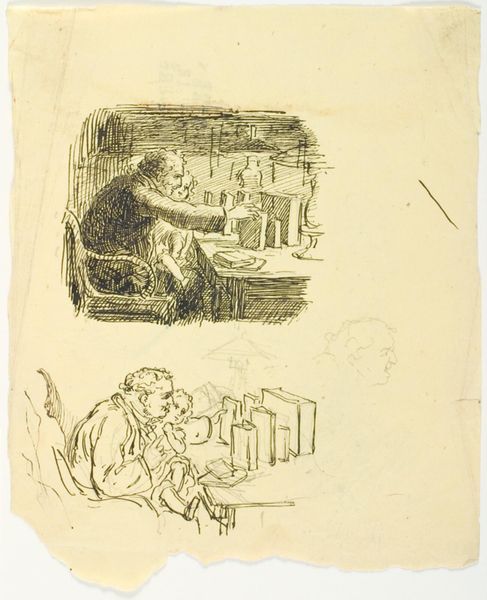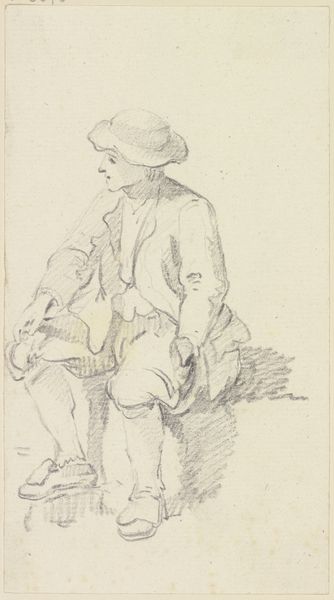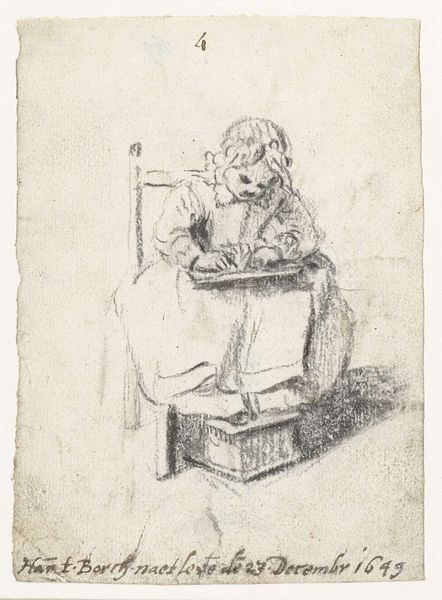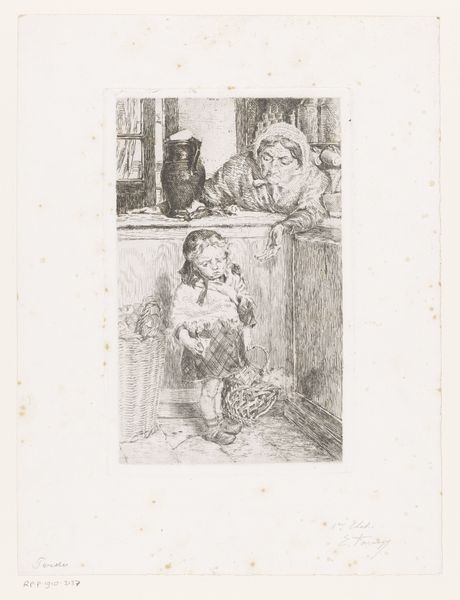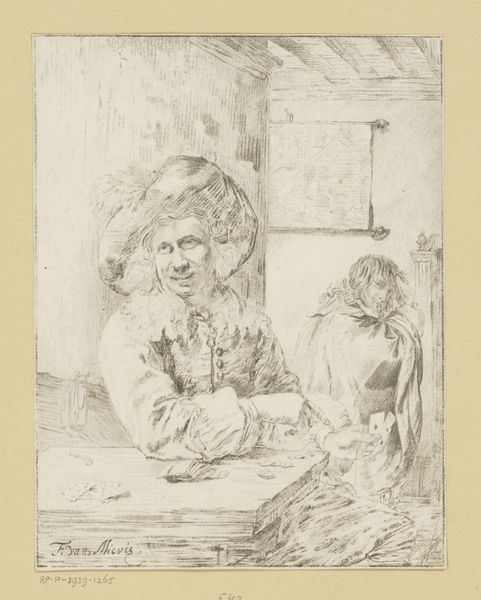
drawing, print, etching
#
portrait
#
drawing
# print
#
etching
#
dog
#
figuration
#
pencil drawing
#
genre-painting
Dimensions: height 181 mm, width 124 mm
Copyright: Rijks Museum: Open Domain
Editor: Here we have Arnoud Schaepkens' etching, "Musicerende man met twee honden," created sometime between 1855 and 1904. The details are quite delicate. It portrays a musician serenading two dogs. It has a strange melancholic charm, doesn't it? What do you see in it? Curator: Well, consider the context. Late 19th century. Genre paintings, scenes of everyday life, were becoming increasingly popular, particularly with a burgeoning middle class eager to see themselves represented. This piece presents a glimpse into a domestic interior and raises interesting questions about the relationship between social class and art. Is this an idealized depiction, or something else? Editor: Something else? What do you mean? Curator: Look at the details of the image – the rough, almost hurried, etching style, the subject’s plain clothing and somewhat worn features, as well as the architecture in the background. Does this strike you as a scene intended for an aristocratic patron? The image is in some ways in line with other etchings, drawings and prints intended for a different type of patronage and display. This would have made such images like these available to many different levels of Dutch society, and it became more focused on this audience as well. Editor: So, it's more for the everyday person? Curator: Possibly. What's intriguing is the dog’s positioning. Dogs frequently appeared in art of the time to communicate themes of fidelity, wealth, but more obviously human interests, in this case MUSIC! What does this particular artist intend to comment on by showing dogs to the centre foreground of this etching? Who is listening, the audience is clearly a subject the artist addresses here, Editor: I see what you mean. The way the work itself could be reaching a different audience, in society at the time, and at least suggests the artist was interested in a response to that in society as well. Thanks for pointing that out. Curator: Of course. Considering the artwork within its historical and social setting is vital to grasping its full impact and relevance, even today.
Comments
No comments
Be the first to comment and join the conversation on the ultimate creative platform.


